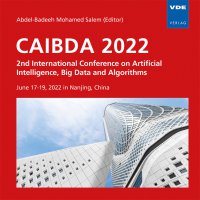Convolutional Neural Network Combined with Transfer Learning for Damage Assessment with Satellite Imagery
Konferenz: CAIBDA 2022 - 2nd International Conference on Artificial Intelligence, Big Data and Algorithms
17.06.2022 - 19.06.2022 in Nanjing, China
Tagungsband: CAIBDA 2022
Seiten: 7Sprache: EnglischTyp: PDF
Autoren:
Hu, Sijia (School of Mechanical, Electrical & Information Engineering, Shandong University, Weihai, Shandong, China)
Inhalt:
Damage assessment is imperative for humanitarian and post-event reconstruction as well as crucial to the relief helpers for resources distribution after a hurricane. Compared to visual inspections and optical and synthetic aperture radar imagery, the article combined satellite images with deep learning algorithms to automatically and efficiently distinguish the post-event damage. In this study, a self-designed CNN model was constructed initially. To enhance the performance, transfer learning based on different backbone networks was proposed. The backbone networks include VGG16, ResNet50, InceptionV3, and MobileNetv2. For the same backbone network, on one hand, the paper freezes different numbers of layers for comparison. On the other hand, on the premise that the number of freezing layers is the same, the paper studies the use of the optimizer (Adam and RMSprop) and the top layer, namely the fully connected layer and global average pooling layer. For different backbone networks, under the condition that the number of frozen network layers, optimizer, top layer, and other parameters are the same, the performance of different models is compared and studied in this paper. To assess the classification performance, this study chose accuracy and the area under the receiver operating characteristic curve (AUC) as the main metrics. It can be concluded that using global average layers, transfer learning widely outperformed fully connected layers. ResNet50 combined with Adam optimizer could achieve an accuracy of 99.6% on the balanced test set and 99.3% on the unbalanced test set, which is the best performance of the proposed algorithms.


